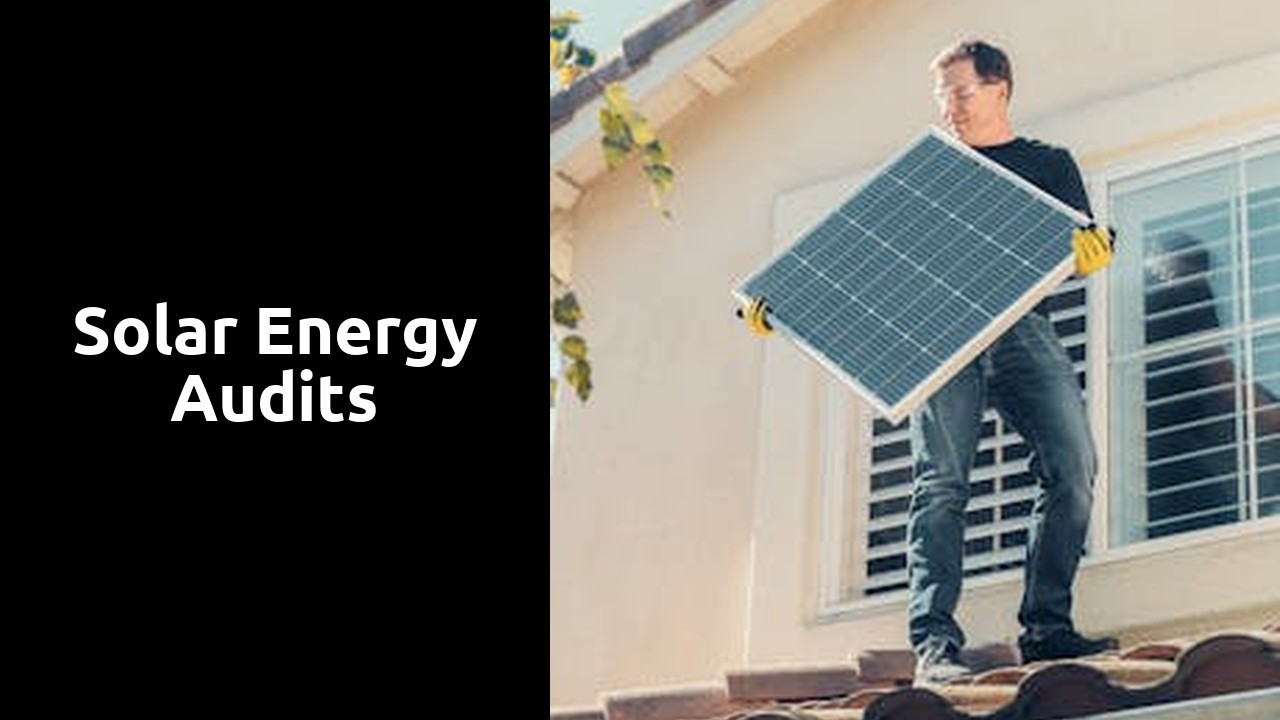
Table Of Contents
Common Energy Audit Findings
Energy audits in Australia often reveal a number of common findings that are crucial for improving energy efficiency in buildings. One frequent discovery is the presence of inefficient lighting systems, with outdated or incorrectly installed lighting fixtures accounting for a significant portion of energy wastage. In addition, inefficient HVAC systems are a common culprit, frequently leading to unnecessary energy consumption and increased operating costs for businesses. Addressing these issues through upgrades and maintenance can result in substantial energy savings over time.
Another prevalent finding in energy audits is the lack of insulation in buildings, particularly in older structures that may not have been adequately retrofitted for energy efficiency. Poor insulation can lead to significant thermal losses, requiring HVAC systems to work harder to maintain comfortable indoor temperatures. Additionally, solar energy audits often identify untapped potential for harnessing solar power to offset electricity usage, with many buildings suitable for implementing solar panels to generate clean and renewable energy.
Key Areas for Improvement in Commercial Buildings
Energy audits in commercial buildings often highlight key areas that can significantly improve energy efficiency and reduce operational costs. Common findings include inefficient lighting systems, outdated HVAC systems, and poor insulation. Addressing these issues can lead to substantial energy savings and create a more sustainable building environment. Solar Energy Audits play a crucial role in identifying opportunities for integrating renewable energy sources, such as solar panels, to further reduce reliance on traditional grid power.
Moreover, optimizing building controls and implementing smart technology solutions can enhance energy management practices. Monitoring energy consumption in real-time and utilizing data analytics can provide valuable insights into building performance and identify areas for improvement. By incorporating energy-efficient technologies and practices, commercial buildings can not only reduce their environmental impact but also increase their long-term cost savings. Solar Energy Audits can guide businesses in implementing practical strategies to enhance energy efficiency and sustainability in their commercial operations.
Reporting and Recommendations
Reporting and recommendations are essential components of the energy audit process in Australia. After conducting a thorough evaluation of a commercial building's energy consumption patterns and systems, auditors are required to provide detailed reports outlining their findings and suggestions for improvement. These reports typically include a breakdown of energy usage, identification of areas with the highest energy consumption, and specific recommendations for enhancing energy efficiency. It is critical for auditors to clearly communicate their findings and recommendations in a concise and easily understandable format to enable building owners and managers to take appropriate action.
In addition to highlighting areas for improvement, energy audit reports in Australia often include recommendations for exploring renewable energy alternatives such as solar power. Given the increasing emphasis on sustainability and renewable energy sources, auditors may suggest incorporating solar panels or other solar energy systems to reduce reliance on traditional energy sources and lower overall energy costs. By incorporating solar energy audits into the overall assessment process, building owners can gain insights into the potential benefits of integrating solar energy solutions into their energy consumption strategy, thereby contributing to a more sustainable and cost-effective operation.
Guidelines for Developing an Energy Audit Report
When it comes to developing an energy audit report in Australia, there are specific guidelines that need to be followed to ensure accuracy and effectiveness. The report should include a detailed analysis of the energy consumption patterns, energy-saving opportunities, and potential improvements that can be made within the building. It is crucial to provide clear and concise recommendations that are tailored to the specific needs and requirements of the building.
Additionally, the energy audit report should include a section on Solar Energy Audits, highlighting the potential benefits and cost savings associated with integrating solar energy systems. This section should outline the feasibility of solar energy implementation, including the projected return on investment, energy output estimates, and any relevant government incentives or rebates available for solar installations. By incorporating Solar Energy Audits into the report, building owners can explore sustainable energy solutions that not only reduce their environmental impact but also lead to long-term energy cost savings.
Monitoring and Verification
Monitoring and verification are essential aspects of ensuring the effectiveness of energy audit recommendations in Australian businesses. Regular monitoring allows for the tracking of energy consumption patterns over time and provides valuable insights into the impact of implemented energy-saving measures. By closely monitoring energy usage post-audit, businesses can identify any deviations from expected savings and promptly address any issues that may arise.
Verification of energy savings is crucial in establishing the success of the audit recommendations. This process involves comparing actual energy consumption data with the predicted savings estimated in the audit report. Verification ensures that the projected energy savings are being achieved and helps identify any discrepancies that may need to be addressed. Solar Energy Audits play a significant role in monitoring and verifying the effectiveness of solar energy systems in reducing energy consumption and greenhouse gas emissions in commercial buildings.
Ensuring Continued Energy Efficiency PostAudit
After completing the energy audit, it is crucial to ensure that the recommended energy-saving measures are effectively implemented to achieve sustained efficiency gains. Regular monitoring and verification of energy consumption patterns post-audit are essential to track progress and identify any deviations from the expected outcomes. By continuously monitoring energy usage and comparing it to the pre-audit baseline, businesses can effectively assess the impact of the implemented measures and make necessary adjustments to optimize energy efficiency further.
Moreover, conducting follow-up Solar Energy Audits at regular intervals can help in identifying potential areas for improvement and ensuring that the building maintains its energy-efficient operations. These audits should not only focus on the initial recommendations but also consider any changes in the building's operations or equipment that may affect energy consumption. By establishing a routine for monitoring energy performance and conducting periodic audits, businesses can maintain a culture of energy efficiency and drive continuous improvement in their environmental sustainability efforts.
FAQS
What is the standard for energy audits in Australia?
The standard for energy audits in Australia is outlined in AS/NZS 3598:2014, which provides guidelines for conducting energy audits in various types of buildings.
Who can perform energy audits in Australia?
Energy audits in Australia should be conducted by qualified professionals with expertise in energy efficiency and building services engineering.
What are the common energy audit findings in commercial buildings?
Common energy audit findings in commercial buildings include inefficient lighting systems, HVAC equipment operating beyond capacity, and poor insulation leading to energy wastage.
How can commercial buildings improve energy efficiency based on energy audit recommendations?
Key areas for improvement in commercial buildings based on energy audit recommendations include upgrading to energy-efficient lighting, optimizing HVAC systems, and implementing building insulation upgrades.
What guidelines should be followed when developing an energy audit report in Australia?
When developing an energy audit report in Australia, it is essential to follow the guidelines outlined in AS/NZS 3598:2014 to ensure comprehensive documentation of energy usage, recommendations, and potential savings.
How can energy efficiency be maintained post-energy audit in commercial buildings?
Ensuring continued energy efficiency post-audit involves implementing the recommendations outlined in the energy audit report, conducting regular monitoring and verification of energy usage, and fostering a culture of energy conservation within the building occupants.
